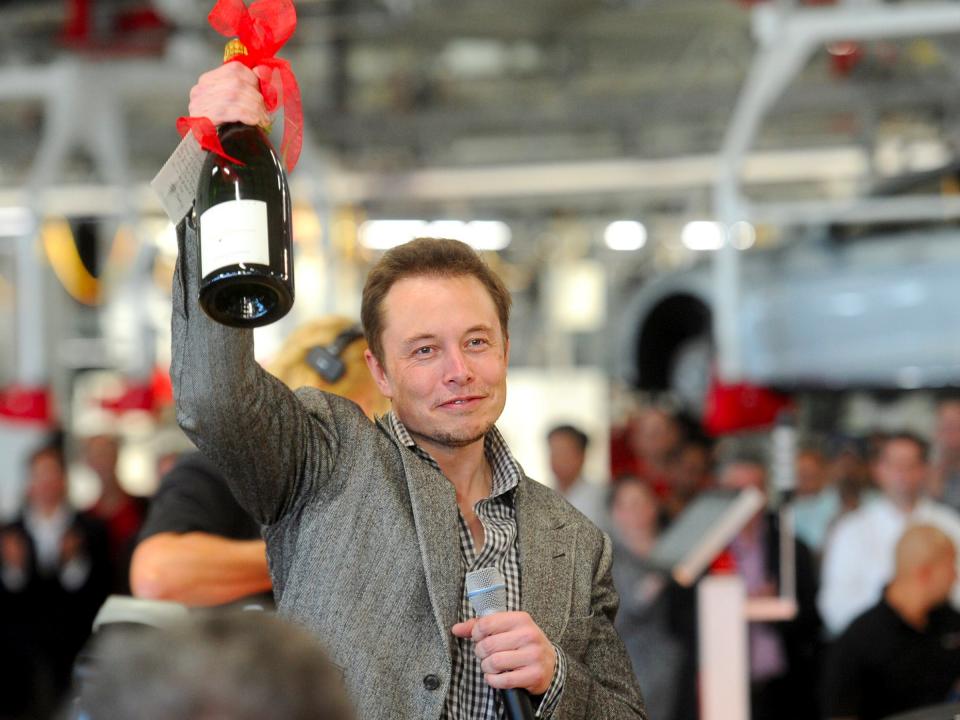Here’s how Tesla’s new self-driving system will work

Reuters/Noah Berger
Tesla CEO Elon Musk made a big announcement Wednesday night when the world had their attention turned to the presidential debate.
Musk announced that Tesla vehicles currently in production — which includes the Model X, Model S, and future Model 3 — will be equipped with new hardware that will enable them to be fully driverless. A Tesla vehicle will drive itself from Los Angeles to New York by the end of 2017 as a demonstration of the new technology.
Since fully driverless cars have yet to secure regulatory approval, owners of the new Tesla cars won’t be able to turn on the self-driving capability just yet. However, the new hardware suite is providing Tesla cars with new Autopilot capabilities that customers could tap into as early as December of this year.
Tesla cars on the road today have Tesla’s first generation Autopilot system that allows the cars to auto steer, change lanes, and merge onto highways. Convenience features built into first-generation Autopilot have also allowed the cars to park themselves, both in a perpendicular and parallel fashion.
The new hardware update is improving Autopilot, giving it the new name Enhanced Autopilot, and paving the way for Tesla cars to become fully autonomous later down the road. Here’s our breakdown of the new system:
Tesla vehicles built between September 2014 and October 2016 were equipped with one camera used for Autopilot. But new Tesla cars are now being built with eight cameras that provide 360-degree visibility and 250 meters (820 feet) of range.

Tesla cars still come with one radar sensor, but it comes with enhanced processing that allows it to see through heavy rain, fog, dust, and even a car right in front of it.

Tesla is also still using 12 ultrasonic sensors, the same as it did before, however they have been updated to detect hard and soft objects at nearly twice the distance of the previous sensors.
New Tesla cars will use Nvidia’s Titan GPU, a new onboard computer system with 40 times the computing power of Tesla’s previous system.

If you buy a new Tesla, you can opt to purchase the new Autopilot system, aptly named Enhanced Autopilot, for $5,000. That system will take advantage of four of the Tesla’s eight cameras, as well as the radar, 12 sensors, and new onboard computing system mentioned before.

Enhanced Autopilot allows the car to match speed to traffic conditions, automatically change lanes without driver input, merge on and off highways, and park itself. You can also summon the car in a more complex environment than before so it will maneuver around objects to find you.

But if you order a new Model X or Model S today, some Autopilot features currently available on today’s Tesla cars will be temporarily disabled. The cars will temporarily lack features like automatic emergency braking, active cruise control, and collision warning.

Tesla is temporarily disabling those features while it calibrates the new sensors on the cars. Once the new features are “robustly validated,” Tesla will roll out the Enhanced Autopilot features via over-the-air updates in December, pending regulatory approval.

But as we mentioned earlier, the new hardware suite does enable the cars to completely drive themselves. However, your Tesla actually doing so depends on regulatory approval. So even if you buy a new Tesla that’s capable of full autonomy, you can’t use it just yet.

Tesla’s full self-driving system will cost you $8,000 at the time of purchase and will include all of the features that are a part of Enhanced Autopilot, as well as the ability to drive itself. However, it is unclear when all of the autonomous features for the self-driving system will become available. Tesla says it will depend on software validation and regulatory approval.

The full self-driving system will utilize all eight cameras, allowing it to find the optimal route to your destination, navigate urban streets, even without lane markings…

… And manage intersections with stop signs, traffic lights, and roundabouts.

If you get into your self-driving Tesla and don’t enter a destination, the car will look at your calendar and take you to your assumed destination or home if nothing is in the calendar.

All of this means that if you order a new Tesla today, you could feasibly have a fully self-driving car, pending regulatory approval. Until then, you’re getting a host of advanced Autopilot features.

The update comes while Tesla’s first generation Autopilot system is still under investigation by the National Highway Traffic Safety Administration following a Model S getting into a fatal accident while Autopilot was activated.

You can read more about that here.
“The foundation has been laid for fully autonomous, it’s twice as safe as a human, maybe better,” Musk said on a call with journalists introducing the new Autopilot system. “”It’s basically a supercomputer in the car.”

The post Here’s how Tesla’s new self-driving system will work appeared first on Business Insider.

 Yahoo Finance
Yahoo Finance 
